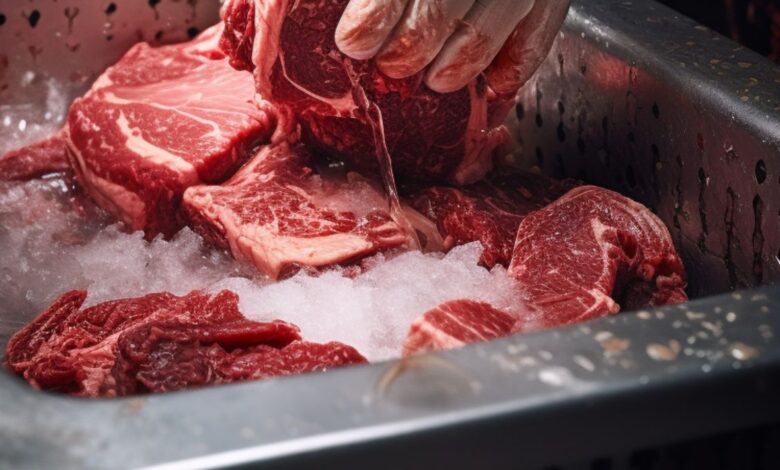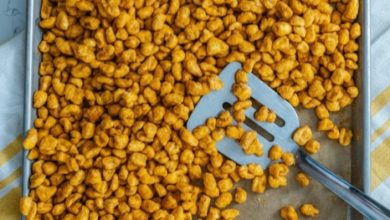Is it safe to defrost meat in hot water? Everything you need to know

Thawing meat is a common kitchen task, but it’s important to consider food safety to prevent bacterial growth and reduce the risk of foodborne illness. There’s much debate surrounding the use of hot water for defrosting meat.
ADVERTISEMENT
As consumers, having accurate, concise information is crucial for making informed decisions about food safety in our kitchens.
Understanding the Risks of Thawing Meat in Hot Water: Thawing meat incorrectly can lead to the growth of harmful bacteria like Salmonella and E. coli. These bacteria thrive at temperatures between 40°F and 140°F, known as the “danger zone.” Hot water can easily fall within this range, potentially creating an environment for bacteria to flourish if not managed properly.
ADVERTISEMENT
- The Science Behind the Danger Zone: The danger zone is significant when thawing meat. Meat should not remain in the temperature range of 40°F to 140°F for more than two hours. In hot water, meat can quickly reach these temperatures, allowing bacteria to multiply before they are eliminated during cooking.
- Bacterial Growth on Meat’s Surface: When meat is thawed in hot water, the outer layers may become too warm while the inside remains frozen. This temperature difference can lead to bacteria establishing themselves on the surface. Once meat reaches the danger zone temperatures, bacteria can double in number in as little as 20 minutes, posing a significant health risk.
- Temperature Inconsistency: The water temperature is not stable and may decrease after the meat is submerged. This inconsistency can result in uneven thawing, making it challenging to ensure the entire piece of meat remains out of the danger zone during the thawing process.
Safer Alternatives to Thawing Meat: Considering the risks associated with hot water thawing, it’s essential to explore alternative methods recognized as safe by food safety experts, including:
ADVERTISEMENT
- Refrigerator Thawing: Thawing meat in the refrigerator is the safest method. Although slower (often taking a full day for larger cuts of meat to thaw), it keeps the meat out of the danger zone entirely. The meat can then be safely stored in the refrigerator for a day or two before cooking.
- Cold Water Thawing: Thawing meat in cold water is faster than refrigerator thawing and relatively safe if done correctly. To safely thaw meat in cold water, place it in a leakproof plastic bag and submerge it, changing the water every 30 minutes to maintain its cold temperature.
- Microwave Thawing: Microwave thawing is a quick method but can lead to uneven thawing and partial cooking of the meat. If using the microwave, cook the meat immediately after thawing to prevent bacterial growth in areas that may have reached dangerous temperatures.
Key Takeaways for Safe Meat Thawing: While the safety of hot water thawing may depend on specific circumstances, it generally poses a higher risk of bacterial contamination and compromises food safety. Remember these key points for safe meat thawing:
- Keep meat out of the danger zone temperatures.
- Prefer refrigerator thawing whenever possible.
- If faster thawing is necessary, use cold water or microwave methods cautiously.
- Cook meat immediately after thawing, especially when using methods that may warm parts of the meat to danger zone temperatures.
Practicing safe thawing techniques is crucial for meal preparation. The additional time it takes to safely thaw meat can make the difference between a delicious, safe-to-eat meal and one that could pose health risks. Always prioritize temperature control and opt for methods that keep meat safely out of the danger zone.




